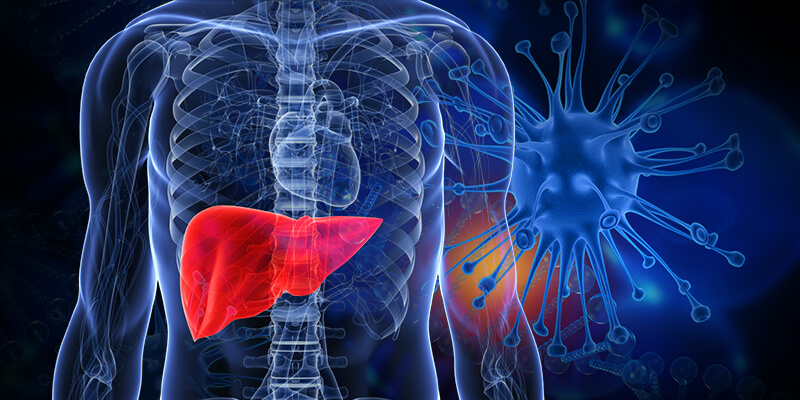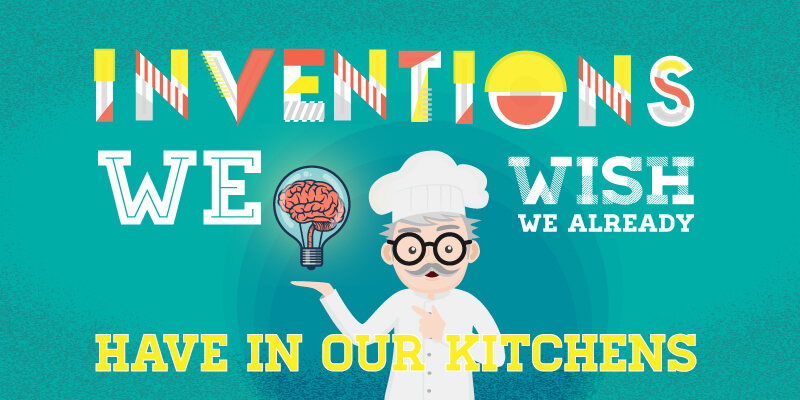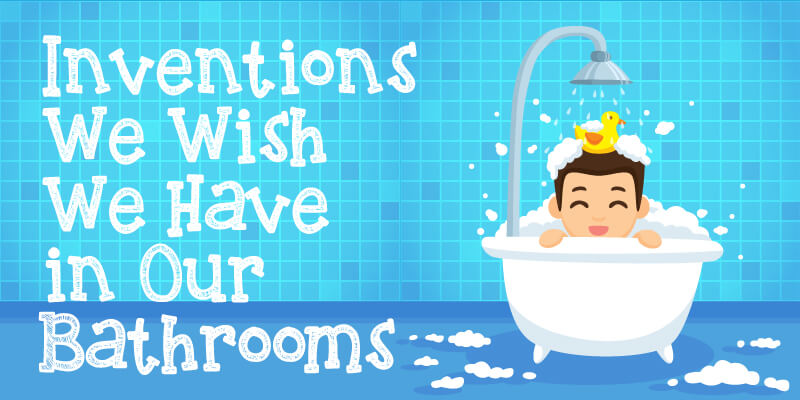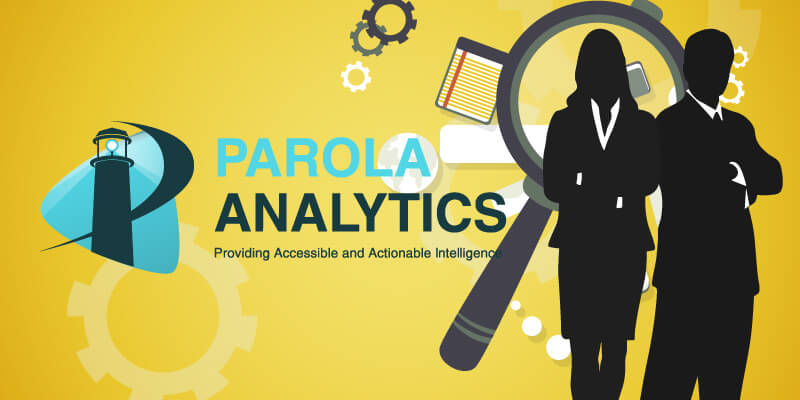On 7 January 2019 USPTO Director Andrei Iancu issued the 2019 Revised Patent Subject Matter Eligibility Guidance (Revised Guide), which may encourage the courts to finally address the longstanding issues spawned by the two-prong test developed in Alice Corp v CLS Bank International. There are various possible motivations behind the USPTO’s seemingly inconsistent interpretation of Step 2 of the Alice test. However, because the inconsistency seems obvious, there must be more to the proposal than meets the eye.
The Revised Guide – which provides examiners with step-by-step instructions for conducting Section 101 patent-eligibility analyses – aims to alleviate the difficulties experienced performing such an analysis using the Alice test. The Revised Guide has modified the steps outlined in Step 2A of the previous guide for evaluating whether a patent or patent application claim is directed to one of the judicial exceptions (ie, laws of nature, natural phenomena or abstract ideas).
Ostensibly, the goal is to impart greater clarity, predictability and consistency when dealing with claims that might be considered to cover an abstract idea. The Revised Guide could thus provide a welcome steer not only for examiners, but also for patent applicants and their advisers.
Step 1
Step 1 of the USPTO’s eligibility analysis – which involves determining whether a claimed subject matter corresponds to one of the four statutory categories of patentable subject matter under Section 101 (ie, process,
machine, manufacture or composition of matter) – remains unchanged from the previous version. Step 2 comprises two steps: Step 2A and Step 2B.
Step 2A, Part 1 (whether a claim falls under a judicial exception)
The revised Step 2A has two parts. In the first part, a claim is examined to see whether it recites a judicial exception. If it does not, the claim is considered patent eligible and the patent-eligibility analysis ends. If the claim does recite a judicial exception – or does not belong to any of the abstract idea categories, but is believed by the examiner to recite an abstract idea – the claim examination moves to Step 2A, Part 2.
Step 2A, Part 2 (practical application requirement)
In Part 2 of the revised Step 2A, the claim is evaluated to determine whether it “recites additional elements that integrate the exception into a practical application of that exception” (the practical application requirement). If so, the claim is considered eligible and the eligibility analysis ends. Otherwise, the claim is deemed to be directed to the recited judicial exception and undergoes additional analysis under Step 2B.
In determining whether a claim satisfies the practical application requirement, the Revised Guide notes
that either a single claim element or a combination of elements can encompass the requisite practical
application. Thus, the Revised Guide emphasises the following:
- All additional elements must be considered, regardless of whether they are conventional.
- A claim must also be considered as a whole.
- The manner in which an element or combination of elements is organised in the claim as a whole must be carefully assessed.
In the context of revised Step 2A, the Revised Guide provides the following examples of various instances in which a claim element (referred to in the guide as an “additional element”) satisfies the practical application requirement:
- The claim element provides an improvement in a computer’s functioning or in another technology or
technical field. - The claim element is directed to a certain method for treating or preventing a disease or medical condition
through the application of the judicial exception. - The claim element applies a judicial exception through a machine or manufacture essential to the claim.
- The claim element affects the conversion of a particular article to a different state or thing.
- The claim element applies a judicial exception “in some other meaningful way beyond generally linking
the use of the judicial exception to a particular technological environment, such that the claim as
a whole is more than a drafting effort designed to monopolize the exception”.
According to the Revised Guide, Step 2A specifically excludes consideration of whether the additional element represents well-understood, routine, conventional activity.
Step 2B (inventive step criterion)
If a claim is found to be directed to a judicial exception under Step 2A and not integrated into a practical application, it must be further examined to assess whether one or more elements recite an inventive step, rather than a mere well-understood, routine, conventional activity. If so, the claim is considered patent eligible and the patent-eligibility analysis ends. Otherwise, the claim is deemed to be patent ineligible.
Examples of patent-ineligible claims
In the context of revised Step 2A, the Revised Guide provides the following examples of various instances in which a claim element (referred to in the guide as an “additional element”) satisfies the practical application requirement:
- “an additional element merely recites the words ‘apply it’ (or an equivalent) with the judicial exception, or merely includes instructions to implement an abstract idea on a computer, or merely uses a computer as a tool to perform an abstract idea”;
- “an additional element adds insignificant extrasolution activity to the judicial exception”; and
- “an additional element does no more than generally link the use of a judicial exception to a particular technological environment or field of use”.
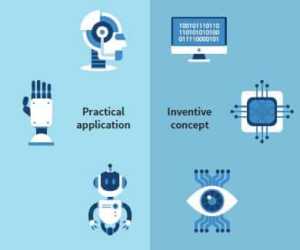
Patent-eligible applications versus practical applications
Iancu’s proposed guidelines for determining patent eligibility under Section 101, in which “examiners would assess whether the claims integrate the exception into a practical application of the otherwise excluded material”, are consistent with the following language used by the Supreme Court in Alice: whether the additional elements “transform the nature of the claim” into a patent-eligible application. (Emphasis added.)
a framework for distinguishing patents that claim laws of nature, natural phenomena, and abstract ideas from those that claim patent-eligible applications of those concepts. (Emphasis added.)
Iancu also cited examples of claimed inventions that would not be considered to integrate an abstract idea into a practical application. Accordingly, the: mere performance of excluded subject matter, like math or fundamental economics, on a general purpose computer is not a practical application, as we learned at least in the Benson, Bilski and Alice cases.
Likewise, “insignificant post-solution activity by itself does not create a practical application.” According to the USPTO, an example of post-solution activity is: an element that is not integrated into the claim as a whole, e.g., a printer that is used to output a report of fraudulent transactions, which is recited in a claim to a computer programmed to analyze and manipulate information about credit card transactions in order to detect whether the transactions were fraudulent.
However, although Iancu specifically referred to “practical” applications in the Revised Guide, the court referred to “patent-eligible” applications in Alice. Thus, Iancu seems to imply that for an application of an abstract concept to be patent eligible, it must be practical.
So what does ‘practical’ mean in the context of a patent-eligibility analysis under Section 101? The relatively recent US Court of Appeals for the Federal Circuit (CAFC) decision in Interval Licensing LLC v AOL, Inc offers some clues: In other words, those latter claims failed to recite a practical way of applying an underlying idea; they instead were drafted in such a result-oriented way that they amounted to encompassing the “principle in the abstract” no matter how implemented. (Emphasis added.)
Furthermore, in light of the broad, result-oriented construction for “attention manager,” we agree with the district court that the claimed “attention manager” encompasses a patent-ineligible abstract concept rather than an arguably technical improvement to display devices, because the term as properly construed simply demands the production of a desired result (noninterfering display of two information sets) without any limitation on how to produce that result. Instead of claiming a solution for producing that result, the claim in effect encompasses all solution. (Emphasis added.)
Simply appending conventional steps, specified at a high level of generality,” to a method already “well known in the art” is not “enough” to supply the “‘inventive concept’” needed to make this transformation. Mayo, supra, at…
(Emphasis added.)
According to the court, claimed inventions that cover patent-ineligible abstract ideas include those that recite
claims that:
- are too broad (ie, claims that are without limitation or are highly general);
- encompass the abstract idea itself; or
- do not recite a practical application of the abstract idea.
Further, claimed inventions purporting to provide a solution to a problem will not be patent eligible if they fail to make clear the specific solution being provided or how it will be implemented.
Practical and practicable: ends and means of practical applications
A definition or interpretation of a patent-ineligible abstract idea as something divorced from any practical application of the abstract idea itself (eg, for lack of sufficient specificity in the claims) comports with a common-sense notion of the term ‘practical’.
If it is unclear exactly how to implement a claimed solution to a problem (based on a practical application of an abstract idea) because, for example, it was recited in the claims and described in the specification only in broad terms, it would be difficult to determine how to solve the problem based on such generalised instructions or teachings. Such an ambiguous purported solution would be considered non-practical if not a non-solution.
The above interpretation or definition of a patentineligible ‘abstract idea’ is consistent with dictionary meanings of the term ‘abstract’ (eg, “disassociated from any specific instance” or “insufficiently factual”). For example, a claimed abstract idea-based solution to a problem that is disassociated from any specific instance is likely to be rejected as an instance of an abstract idea’s integration into a practical application.
However, even if a claim recites a practical application with sufficient specificity, it must still provide some form of real-world benefit (ie, a useful end result, such as an improvement in a computer’s functioning) in order to satisfy Section 101’s utility requirement.
Based at least on the language that the courts have used (eg, Interval Licensing v AOL), a correct definition or interpretation of the term ‘practical application’ must specifically refer to abstract idea-based applications that not only provide useful solutions to real-world problems (rather than, for example, solutions to abstract mathematical problems), but also allow reasonably attainable or feasible implementations of those solutions in the real world.
Thus, the ends and the means of a claimed invention based on the application of an abstract idea must simultaneously be practical and practicable, respectively.
Proposed patent-eligibility test rooted in practical applications
Following Iancu’s proposal, Step 2 of the original twoprong test may be rewritten into one that focuses on the practical application aspect of Step 2, rather than the inventive aspect.
Original version (based on Step 2 of Alice’s twoprong test)
Examine the elements of the claim to determine whether it contains an inventive concept sufficient to transform the claimed abstract idea into a patent-eligible application of the concept (ie, into something that is significantly more than the abstract idea at issue).
Proposed version
Examine the elements of the claim to determine whether the claimed invention is directed to a novel practical application of an otherwise prohibited concept or idea (eg, whether it provides a specific solution to a problemor improvement in a technology).
In the proposed version of Step 2, the problematic wordings “inventive concept” and “significantly more than the abstract idea” have been intentionally omitted for the reasons discussed here.
The proposed version of Step 2 offers several advantages:
- It does not require a direct determination of whether a claimed invention falls under the abstract
idea exception. - Even better, there is no need to determine whether something is substantially more than an abstract thing
– a criterion that could be fairly characterised as an abstraction in itself. - It is relatively specific and thus easier to apply and less likely to cause confusion.
- It avoids the many confusing complications spawned by the inventive concept requirement in Step 2 of the two-prong test.
- It is consistent with the language and intent of Section 101: Whoever invents or discovers any new and useful process, machine, manufacture, or composition of matter, or any new and useful improvement thereof, may obtain a patent therefor, subject to the conditions and requirements of this title. (Emphasis added.)
It might be even more convenient and useful to further simplify the two-prong Alice test into the following one-prong test: To determine whether a claimed invention is patenteligible under Sect. 101, the claimed invention must be examined to establish whether the claimed invention is directed to a novel practical application of an otherwise prohibited concept or idea, e.g., whether it provides a specific solution to a problem or improvement in a technology. If so, the claimed invention is patent-eligible. (Emphasis added.)
As specified by Section 101, claimed inventions must be useful. However, Section 101 explicitly requires claimed inventions to be novel, but omits any mention of the terms ‘inventive’, ‘inventive step’ and ‘inventive concept’, except for the phrase “Whoever invents…”. When it comes to utility, the practical application of an abstract concept or idea implies at least some level of utility. The same can be said for solutions to a problem and improvements in a technology. Therefore, the question of whether a claimed invention has utility has historically been a non-issue for most patent applications.
Unfortunately, the same cannot be said for the inventive concept criterion of Step 2 of the two-prong test. For one, its provenance and any substantive family-tree relations traceable to Section 101 remain a mystery. Despite the confusion and uncertainty that it has generated within the patent community, the courts still rely on the inventive concept criterion when performing a Section 101 analysis.
For example, in Data Engine v Google, the US Court of Appeals for the Federal Circuit concluded as follows:
We also conclude that the asserted claims of the ’146 patent do not recite an inventive concept under Alice step two. The claims recite the generic steps of creating a base version of a spreadsheet, creating a new version of the spreadsheet, and determining changes made to the original version. (Emphasis added.)
Further, in Interval Licensing v AOL, the court held as follows:
Interval Licensing re-raises its claimed instructions in the form of an alleged inventive concept. But, for the reasons we have already given supra, the instructions are recited at a high level of generality and conventional, and are not the kinds of limitations we have held to “solve a technology-based problem, even with conventional, generic components, combined in an unconventional manner. (Emphasis added.)
Whether considering the claim elements of representative claim 18 individually or as an ordered combination, nothing in the claim converts the abstract idea to an inventive concept. (Emphasis added.)
Time will tell whether the courts will adopt, at least in some form, Iancu’s focus on the practical application aspect of the two-prong test and begin to steer clear of the problematic inventive concept criterion of Step 2 (and all of the baggage that it carries) in future Section 101 patent-eligibility cases.
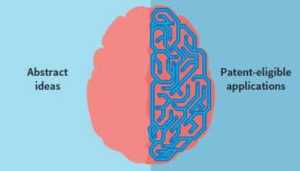
How is the Revised Guide inconsistent with the original Alice test?
The two-prong Alice test comprises the following steps:
- Determine whether the claim at issue is directed to a patent-ineligible concept that falls under one of Section 101’s implied exceptions (ie, laws of nature, natural phenomena or abstract ideas).
- Examine the elements of the claim to determine whether it contains an inventive concept sufficient to transform the claimed abstract idea into a patenteligible application of the concept (ie, into something that is significantly more than the abstract idea at issue).
Step 2 does not merely require determining the presence of an inventive concept in the claim at issue. It also closely links the inventive concept to an application of the concept and specifically to a patent-eligible application of the concept.
Thus, Step 2 suggests that not all claims that recite an application of an abstract concept are patent eligible. It also does not appear to imply that a practical application of a judicial exception would be one example of a patenteligible application of an abstract idea.
| Action plan |
|---|
| The USPTO’s Revised Guide could provide much-needed relief for many patent applicants and practitioners by enhancing the clarity, predictability and consistency of the process through which their patent applications are examined. Regardless, practitioners should always draft claims in a form that avoids: |
| In the latter case, it would be wise to include in the specification concrete examples or descriptions of the solution that the claimed invention purports to provide for solving a problem. |
Further, not all practical applications contain an inventive concept based on the traditional notion of the term ‘inventive’. Many applications – regardless of whether they are based on abstract ideas – have practical uses. However, not all of them are necessarily novel or inventive.
Thus, a more reasonable interpretation of Step 2 of the Alice test would be one in which a patent-eligible application of an abstract concept must be sufficiently ‘inventive’ (whatever that means apart from the definition set out in Section 103) so as to transform the claimed abstract concept into something significantly more than the abstract idea.
However, if we abide strictly by the language of Section 101 (“Whoever invents or discovers any new and useful process… or any new and useful improvement thereof ”), Step 2 of the Alice test should have explicitly required practical applications of abstract ideas to be novel.
Conversely, the Revised Guide states that:
In Prong Two, examiners should evaluate whether the claim as a whole integrates the recited judicial exception into a practical application of the exception… When the exception is so integrated, then the claim is not directed to a judicial exception (Step 2A: NO) and is eligible.
It further states that:
If the additional elements do not integrate the exception into a practical application, then the claim is directed to the judicial exception (Step 2A: YES), and requires further analysis under Step 2B (where it may still be eligible if it amounts to an inventive concept).
Further, Step 2A of the Revised Guide – which specifically relates to the practical application requirement of the patent-eligibility analysis – excludes consideration of whether the additional element represents well-understood, routine, conventional activity. The Revised Guide instead treats the inventive concept criterion separately under Step 2B.
Thus, while Step 2 of the Alice test focuses on determining the presence of an inventive concept following a determination that the claimed invention covers an abstract idea, the Revised Guide follows a different tack. The Revised Guide does not require satisfaction of the inventive concept criterion in patenteligibility analysis involving claimed inventions that recite abstract ideas, provided that they integrate the abstract idea into practical applications of the exception. In other words, it divorces the inventive concept from the patent-eligible application of the abstract concept.
Based on this interpretation, the Revised Guide departs from the original language of Step 2 of the Alice test.
Possible motivations for USPTO’s departure from Step 2’s mandate
Conversely, the divergence between the original language of Step 2 of the Alice test and the corresponding guidelines of the Revised Guide seems obvious. Thus, this stark inconsistency may have been inspired by one of the following plausible and wellintentioned motivations:
- The USPTO is trying to bring the practical application requirement to the fore. This would allow it to avoid, as much as possible, having to deal with the highly problematic inventive concept criterion of Step 2 of the Alice test and all of the complications that it brings.
- The USPTO is proactively providing more approachable and consistent examination guidelines that are less onerous for examiners to implement in their daily practice. After all, the USPTO must bear the enormous burden of implementing the Alice test in a consistent and rational manner on a daily basis, if at all possible. Examiners must have found it incredibly difficult to implement a test based on criteria that they, or anyone else, struggle to understand.
- The USPTO is proposing the guidelines knowing that they are inconsistent with the Alice test in the hope that they will hasten the creation of a more sensible legal test that will supersede the former.
- The USPTO is proposing guidelines that are inconsistent with the Alice test to encourage, or perhaps provoke, more insightful, urgent and determined suggestions from stakeholders through public commentaries. Any of those suggestions could form the basis of a more acceptable, sensible and practical alternative to the two-prong test.
In any case, Iancu’s proposed guidelines could trigger the US Supreme Court to provide long-overdue relief from the enormous and protracted uncertainty that the Alice test has brought for the patent community. Whatever Alice alternative the court chooses, it will hopefully alleviate the deep quagmire of legal, business and economic uncertainty with which the patent community has been forced to put up.
“This article first appeared in IAM Issue 95, published by Globe Business Media Group – IP Division. To view the issue in full, please go to www.iam-media.xn--com-9o0a

